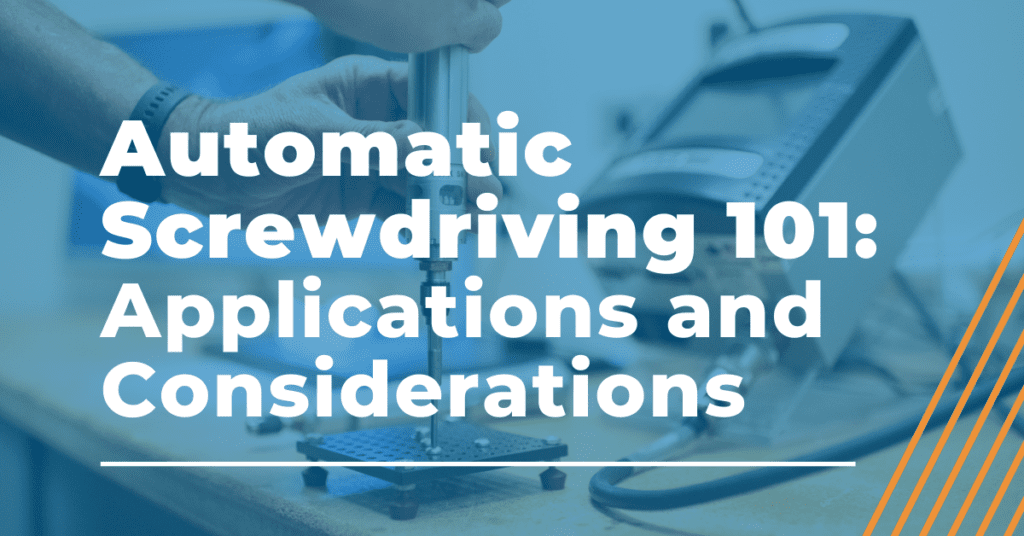
Manufacturing Automation 101: Automatic Screwdriving
Automatic screwdriving is one of the most common assembly methods for plastic and metal parts. As processes evolve, the need to automatically feed and insert threaded fasteners has greatly increased. Assembly Magazine’s Annual Capital Equipment Spending Survey found that screwdriving is performed at 58 percent of U.S. assembly plants, making it more popular than welding, pressing, adhesive bonding or riveting. As a resource for our partners, this blog is intended to give you an overview of automatic screwdriving, its applications, considerations and the clear significance in our assembly world.
What Is It?
There are different sophistication levels in which automatic screwdriving applications are used. Screwdriving at a basic level can be as simple as fixturing a part and incorporating a driver. Whether it is a simple air gun or torque and angle monitoring system for repeatable process control, it is as basic as driving a screw, nut or bolt into position. This is the most cost-effective method of screwdriving, yet it requires a human operator for successful completion.
For more process control, drivers can be attached to a resolver or encoder work arm to confirm not only individual torque but also XY position of each screw. Until position is met, the driver can be programmed to not receive power until the screw is ready to be driven in the correct location.
Removing motion of the human arm, the work arm can position it to the correct position every time.
Furthermore, there are systems that still require little human interaction but can perform the screwdriving automatically, such as adding drivers that are pre-positioned to drive down a threaded insert. For these types of applications, one would need to implement a history and monitoring function that records fastening results, torque curves and system error data. With a HMI system in place, specifications can be met and easily changed.
Automatic screwdriving systems are designed to fasten screws into an assembly with no human interaction. It uses a vibratory bowl to orient and align screws to be singulated and blow-fed to the driving head. As soon as one screw is installed, the next is blown from the escapement tube to the top of the driver/collet assembly. This process takes little to no operator interference and greatly reduces the cycle time and increases quality and throughput. Torque monitoring is vital to automatic screwdriving because a system with tool monitoring features can precisely use the correct torque and angle for every screw.
Most processes in manufacturing that have a need for a fully automated blow-feeding screwdriver typically have three or more screws in an assembly, and are looking to greatly reduce their cycle time. Blow feeding works best in automation when you move the screwdriver with a robot or XY positioning system to its desired location.
Why Is It Important?
Simply put, cycle time, repeatability, and quality are the main key components that drive automatic screwdriving. Human error is inevitable, and with a fully automated blow-driven screwdriving system in place, a manufacturer can assure that every part going through the system is measured to the exact torque and angle needed for the part.
Further Considerations for Automatic Screwdriving
Every screwdriving application has specific considerations. There is a rule of thumb that the length of the shaft has to be 1.5 times the diameter of the head or more for blow feeding a screw into a system. Anything less than that, the screws are not guaranteed to feed properly. Defining the torque and angle spec, cycle time requirements, and quality measures are just the beginning of developing a successful screwdriving system.
Do you have a new project that needs automatic screwdriving? Talk to our experienced and informed team members. We can identify your pain points and deliver a system that will greatly improve your cycle time.
